Brown, wilted, and crispy leaves are challenging to pin down, but mainstream contenders are often behind them. Straightforward measures help us find the source, and we can delve deeper once we’ve scouted the initial causes.
Withering, wilting, and dieback may result from specific growing conditions or problematic fungal diseases. Here, we’ll explore what to look for to determine the cause and remedy the situation for healthy, productive crops and a winning display.
Cultural Conditions
Certain conditions maximize each plant’s growth potential. Vigorous plants with robust root systems have the best resistance to pests, diseases, and periods of environmental stress. These conditions include sun exposure, moisture needs, soil composition, nutrients, and plenty of air circulation.
Plants are adaptable and resilient. Sometimes, simple pruning or watering corrections overcome impediments that cause browning, wilted leaves. Others may require pest or disease protocols. First, check the cultural requirements of each species to meet essential needs for the best health.
Watering Issues
If your crops show signs of yellowing, wilting, and crackling, the first thing to check is soil moisture. We may inadvertently overwater through excessive irrigation or experience prolonged rainfall that causes saturated conditions. Or, a little neglect or dry spell may take effect. In addition to under and overwatering, fluctuations in wet and dry conditions cause stress.
With too much water, plants turn brownish-yellow and become soft, limp, and wilted. Underwatered plants, too, turn yellow, but their foliage become more rigid, crispy, and cracked.
A simple touch test lets us know if soils are too wet or dry. If the soil feels slick and sticks to your fingers at two inches or more deep, oversaturation may be the issue. Decrease irrigation if the soil remains overly wet. Powdery, dry soils indicate a lack of moisture. Adjust according to species requirements.
Regular, deep watering sessions are generally better than frequent, shallow irrigation. Watering deeply ensures roots and surrounding soil absorb moisture for steady uptake and deeper root growth.
Soil Conditions

Soil is the foundation for plant health. Many crops and ornamentals prefer organically rich loams with good drainage. Others tolerate rocky or sandy conditions and various other compositions. Setting up suitable soil helps them grow disease-free with the appropriate nutrients and moisture uptake.
Those that grow naturally in sandy or loose soils may struggle in clay or compacted soils. They may wilt or droop as roots sit in water without access to oxygen. Most species don’t survive in standing water without oxygen, so drainage or lofty loams with air pockets are necessary.
Soil pH relates to alkalinity and acidity levels, and those that are too high or too low begin to block plant nutrient availability. Leaves may become chlorotic due to iron deficiency and the inability to uptake necessary elements.
A soil test helps determine soil pH and other nutrient levels. Your local university extension office or an at-home kit can illuminate soil needs for the best plant health.
Over or Under Fertilizing

Like overwatering, overfertilizing is a way to love your garden to death. Too much fertilizer leads to excess nitrogen, producing more prolific but weaker and less healthy growth. Yellowing, browning, and wilted leaves mark overfertilizing. They become crisp and drop.
If your plant is wilting or drooping and you’ve recently fertilized it, remove it from the location or replace the soil if possible. Otherwise, the situation may correct as the fertilizer runs its course and with regular rainfall.
Conversely, a lack of nutrients also yields yellowing, off-color foliage. Deficiencies result in entirely yellow leaves (lack of nitrogen) or yellow-brown margins and veins (lack of potassium) and other iterations related to low nutrient levels.
If there is yellowing and browning along with stunted growth, and moisture doesn’t seem to be the issue, it may be nutrient deficiency. Calcium, iron, nitrogen, and magnesium are foundational nutrients.
Temperature Stress

Even plants that withstand hot and cold temperatures experience stress during sudden heat waves or cold snaps. In high heat, cells tighten and stems wilt to conserve moisture and energy.
Some plants wilt regularly on a hot summer afternoon, reviving with cooling evening temperatures. Many require increased moisture during hot spells. Even with adequate moisture, they take protective measures. Sometimes, heat is too much, causing an inability to absorb water and nutrients, leading to tender stems and foliage dieback.
Protect crops from high heat with a protective screen, such as a shade cloth or an umbrella. Move containers to shadier, cooler locations until the heat passes.
Freezing temperatures, too, zap tender new growth. Planting too early in spring or too late in the fall can also affect browning and crispy stems.
Provide a two-inch layer of mulch year-round to insulate roots in all seasons. Mulch helps regulate soil temperatures and retain moisture.
Sun Exposure
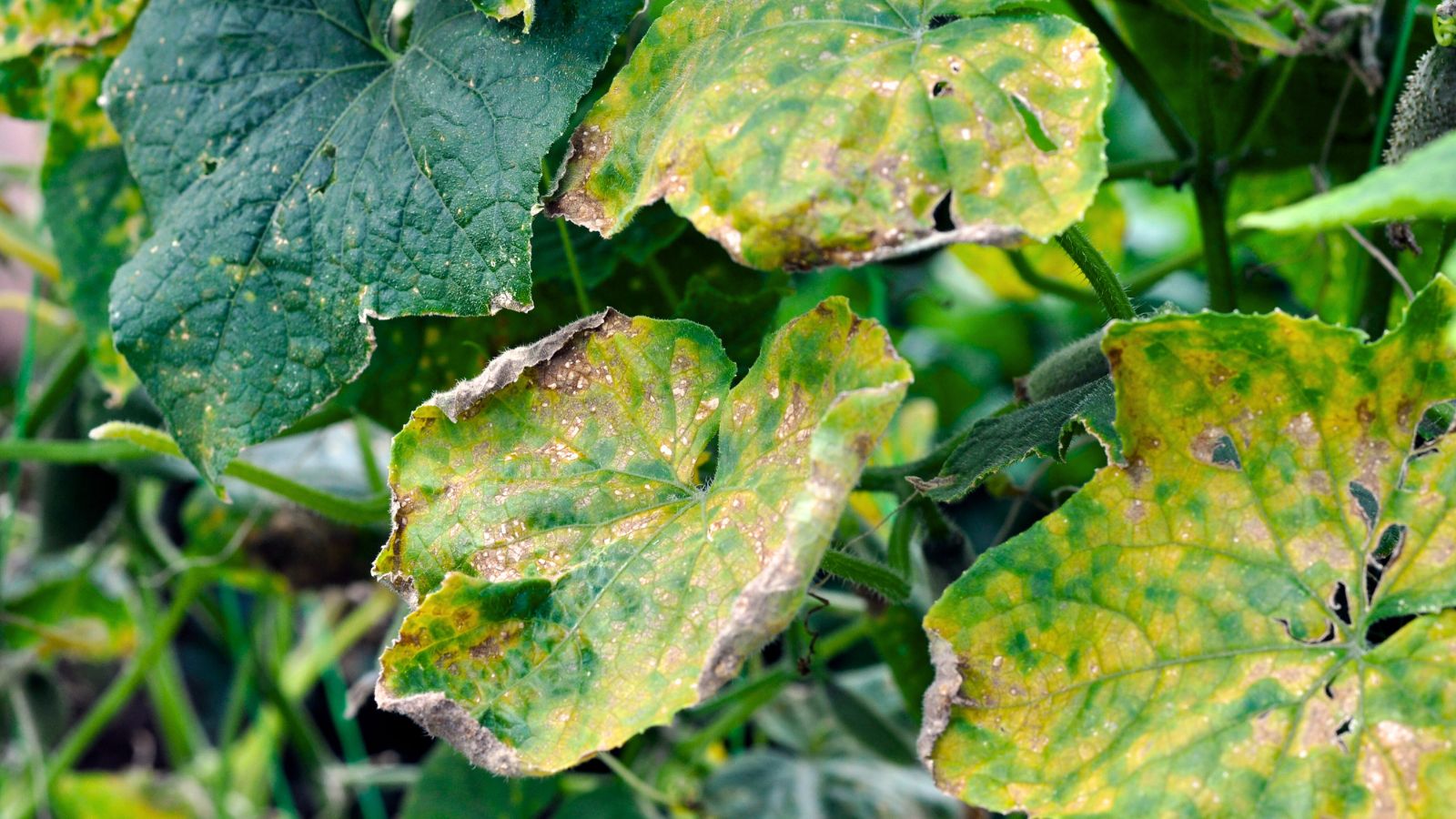
Too much direct sun exposure burns leaves and stems, causing the edges to brown, crisp, and curl. Leaf scorch, or sunscald, also causes wilted, brown leaves. The leaves aren’t absorbing moisture quickly enough, and the outer leaves burn and dry.
Protect plants from the intense sun by following their cultural preferences and adjusting accordingly in your garden situation. Move them to dappled afternoon light or protect them with shade cover if feasible.
Too much sun is detrimental to some species, and too little for others causes leaves to yellow and drop. Partial shade growers may be in too much shade if their leaves drop.
Crowding
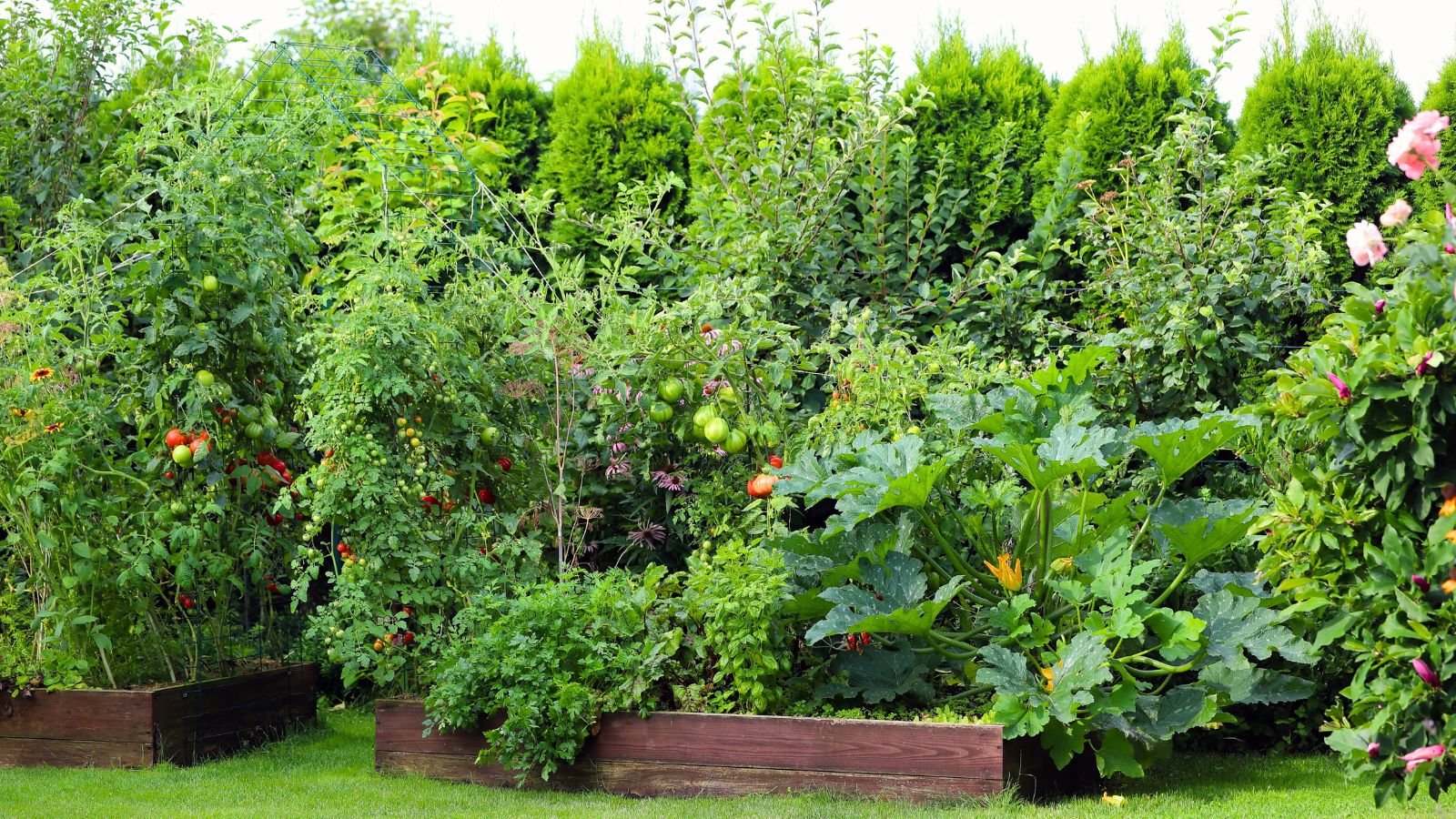
Plants’ robust root systems require room to grow to maturity. Wilting stems may be a sign of overcrowded roots. In the ground, soil compaction or crowded plantings may be the source. For pots, this may mean the container needs to be bigger to accommodate the roots.
Before planting, turn the surrounding soil for aeration to accommodate spreading roots as they search for water. For containers, opt for a pot two to three times larger than the root ball.
Avoid overcrowding surface growth, too, which inhibits air circulation. Good airflow around plants helps prevent fungal diseases.
Aging
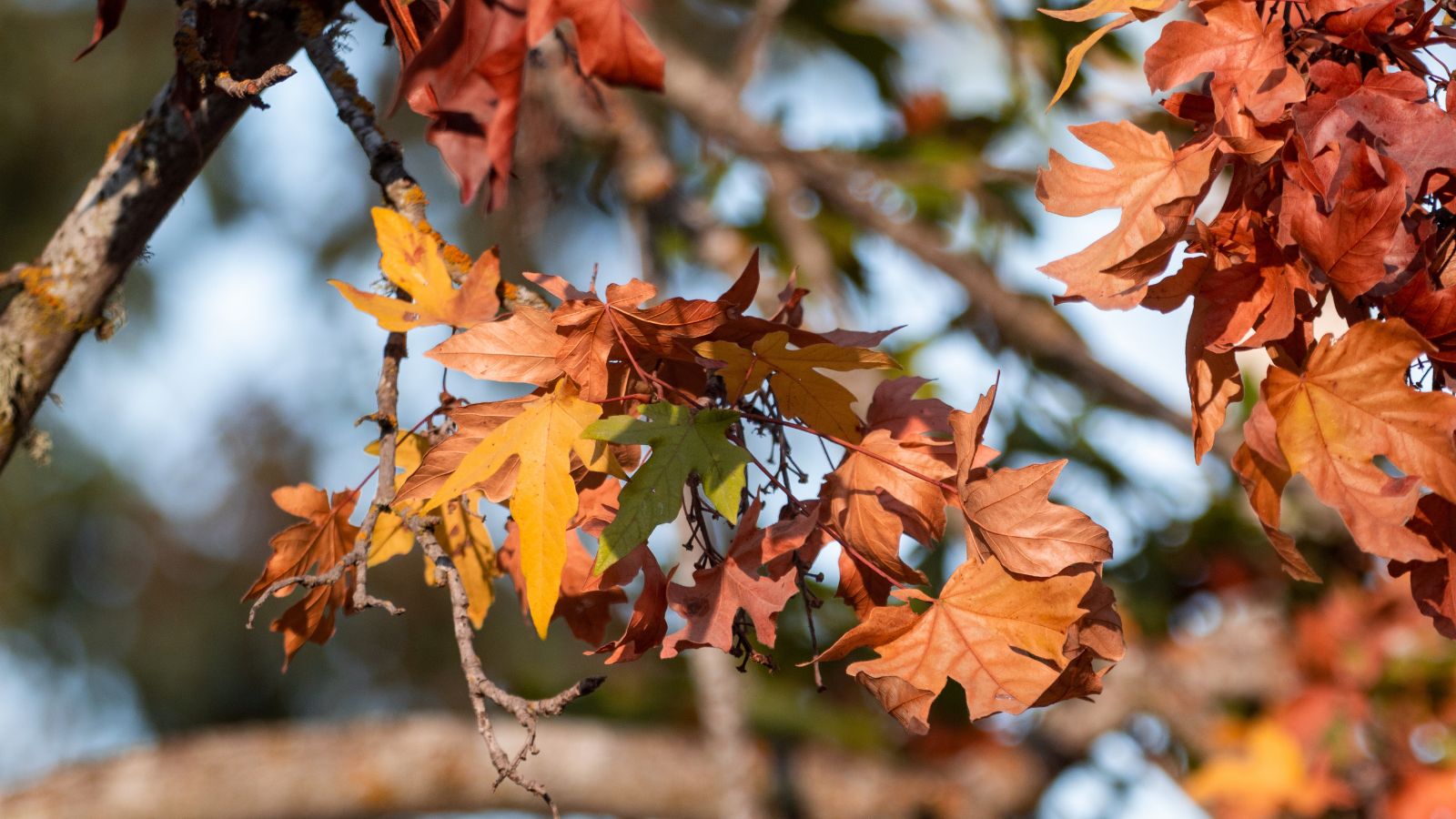
Of course, plants have a life cycle with varying growth phases that affect their viability in absorbing nutrients and growing. Annuals grow and reproduce in a single cycle, quickly using energy to grow, flower, and seed. After accomplishing this, natural browning is usual.
Just as old, mature trees drop limbs to conserve energy for their core, smaller plants begin to drop growth that no longer serves the plant or that it can no longer support. Certain species may also experience a sort of seasonal fatigue, having expended high amounts of energy, followed by a slowdown when not actively growing.
Pests
With cultural conditions in check, the next phase of problem-solving moves to pest scouting. Common garden pests may cause leaf damage or stress in severe infestations. Here are a few repeat offenders for detection, though the list in reality is much longer.
The treatment is similar for each: Spray plants with a stream of water early in the day to knock them off leaves and stems. A simple horticultural soap or neem oil treats infestations. Be sure to follow label directions, as soap and oil treatments affect pollinators.
Aphids
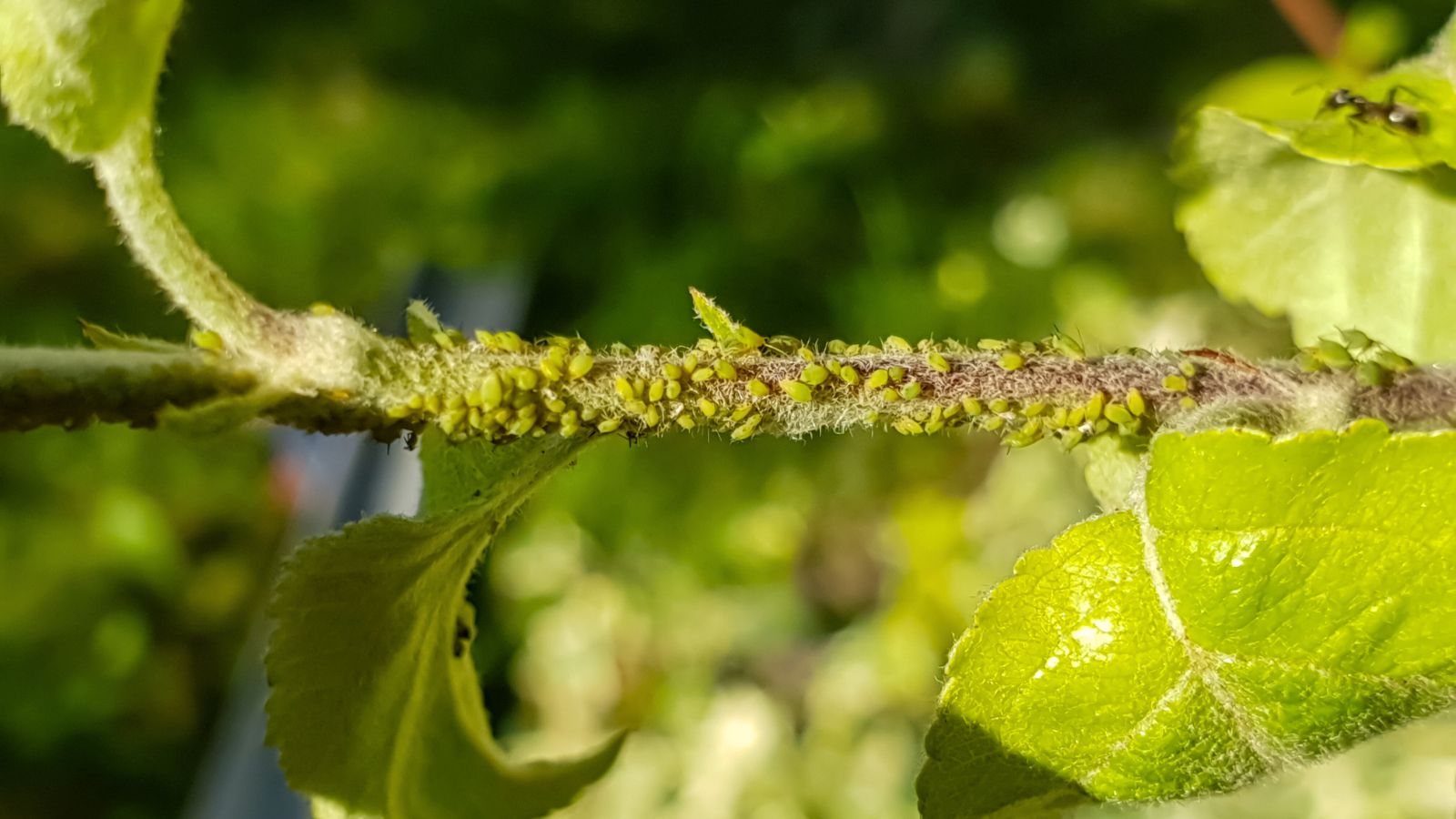
Aphids are common sap-sucking garden insects. They don’t often cause a severe threat, but they can spread diseases among plants. They also leave behind a sticky honeydew that can lead to black, sooty mold.
If you notice curled leaves, stunted growth, or signs of the insect, opt for treatment. Predatory insects feed on aphids, and planting pollen—and nectar-rich plants nearby can increase biodiversity and natural pest control.
Spider Mites
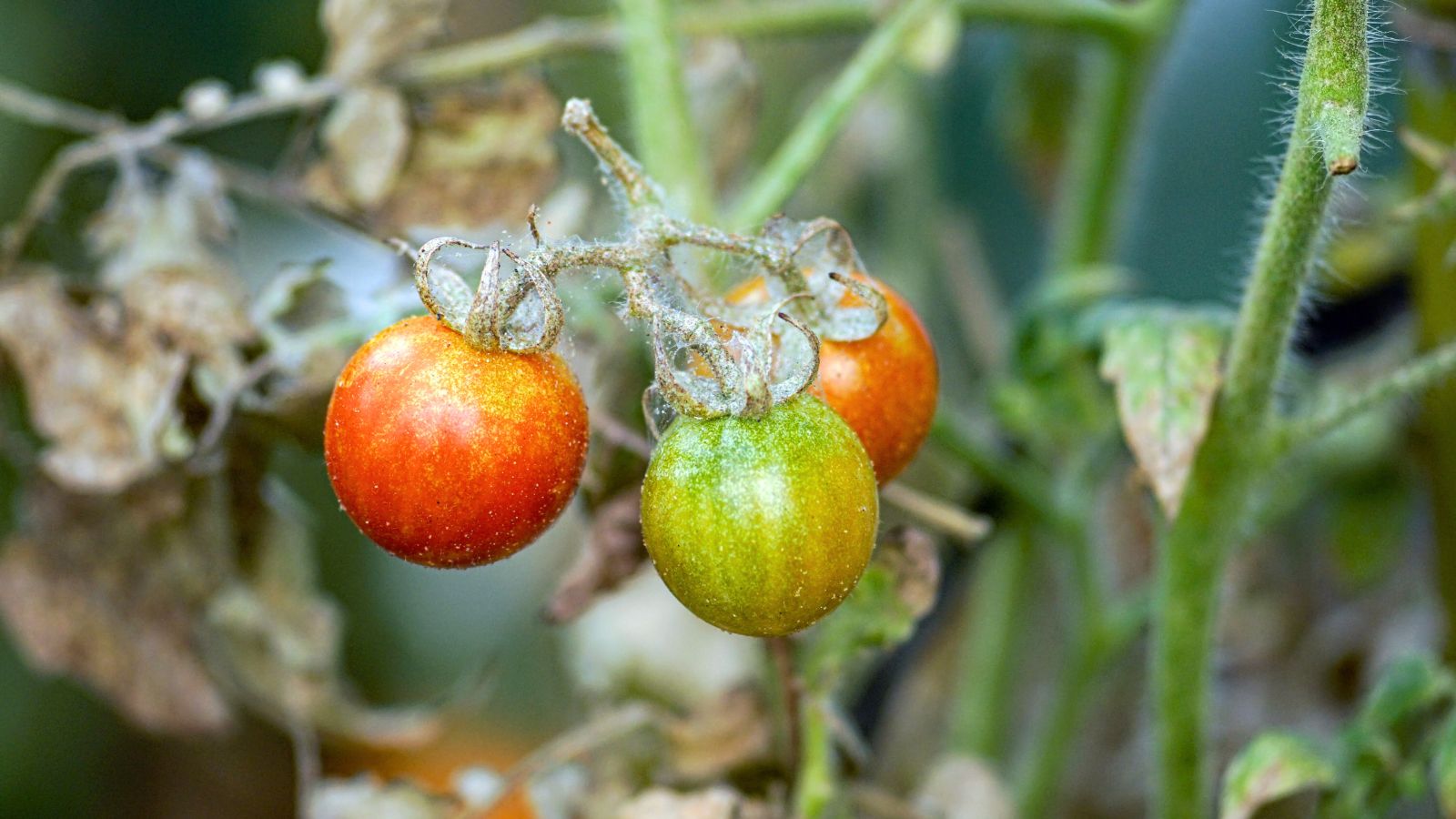
Spider mites are also sap-sucking insects that live on the undersides of leaves. They show webbing and light yellowing of leaf surfaces, and the foliage becomes rigid and discolored. Beneficial insects like ladybugs and predatory mites help control populations.
Scale
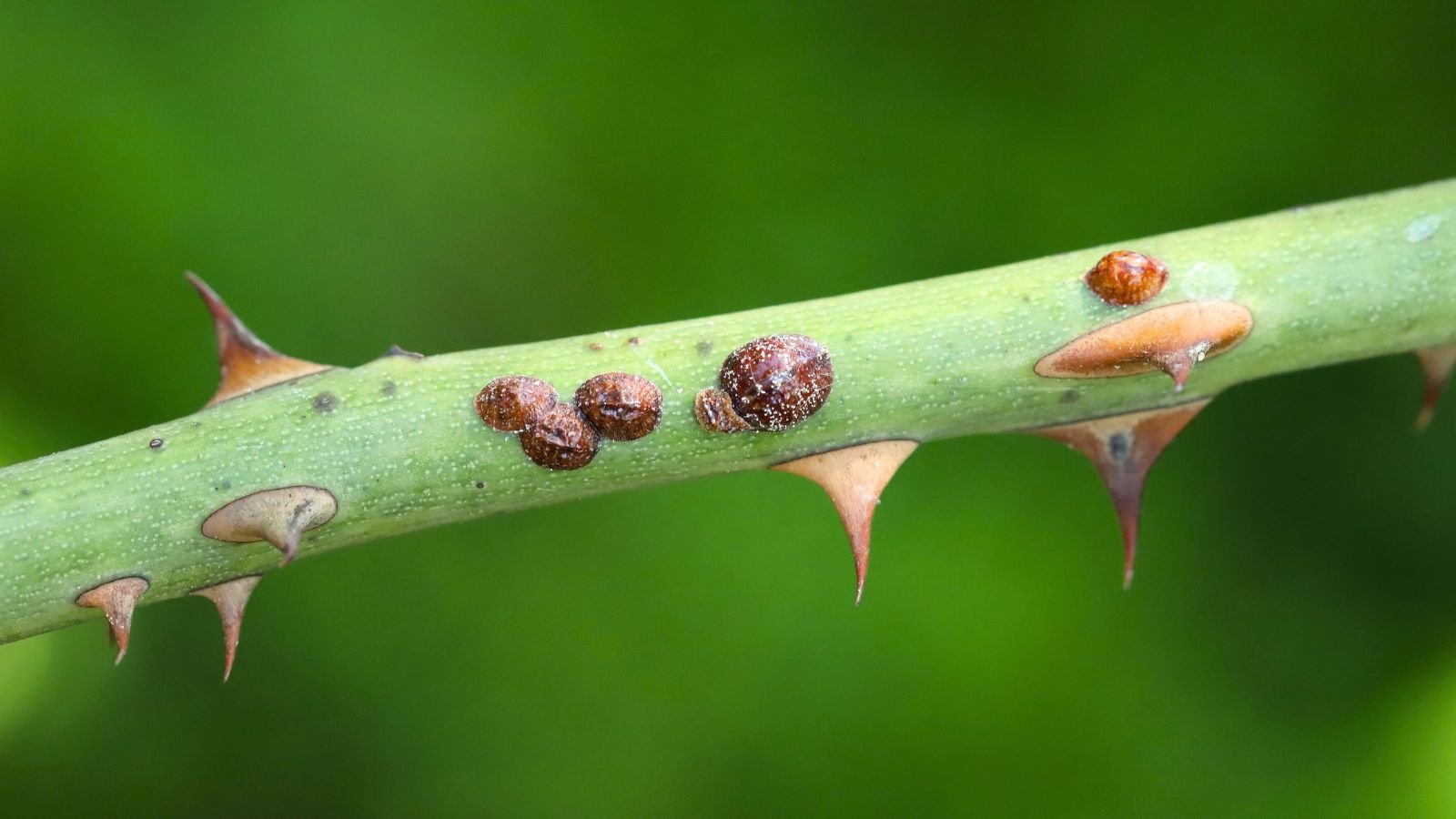
Scale is last on our tissue-feeding pest lineup. The little legless blobs usually appear on the undersides of leaves and stems as black, gray, or silvery dots. In heavy infestations, leaves may turn yellow and drop, and branches die back. If the infestation is severe, remove the affected leaves and branches.
Fungal Diseases
Disease is another cause of wilted, brown, and crispy leaves. Fungi spread easily through soil, wind, and splashing water. Spores attaches to leaves, then the pathogen infiltrates stems and roots, depleting the plant of nutrients and energy. Roots and stems (depending on the pathogen) cannot uptake water, resulting in wilting and dieback.
Root Rot
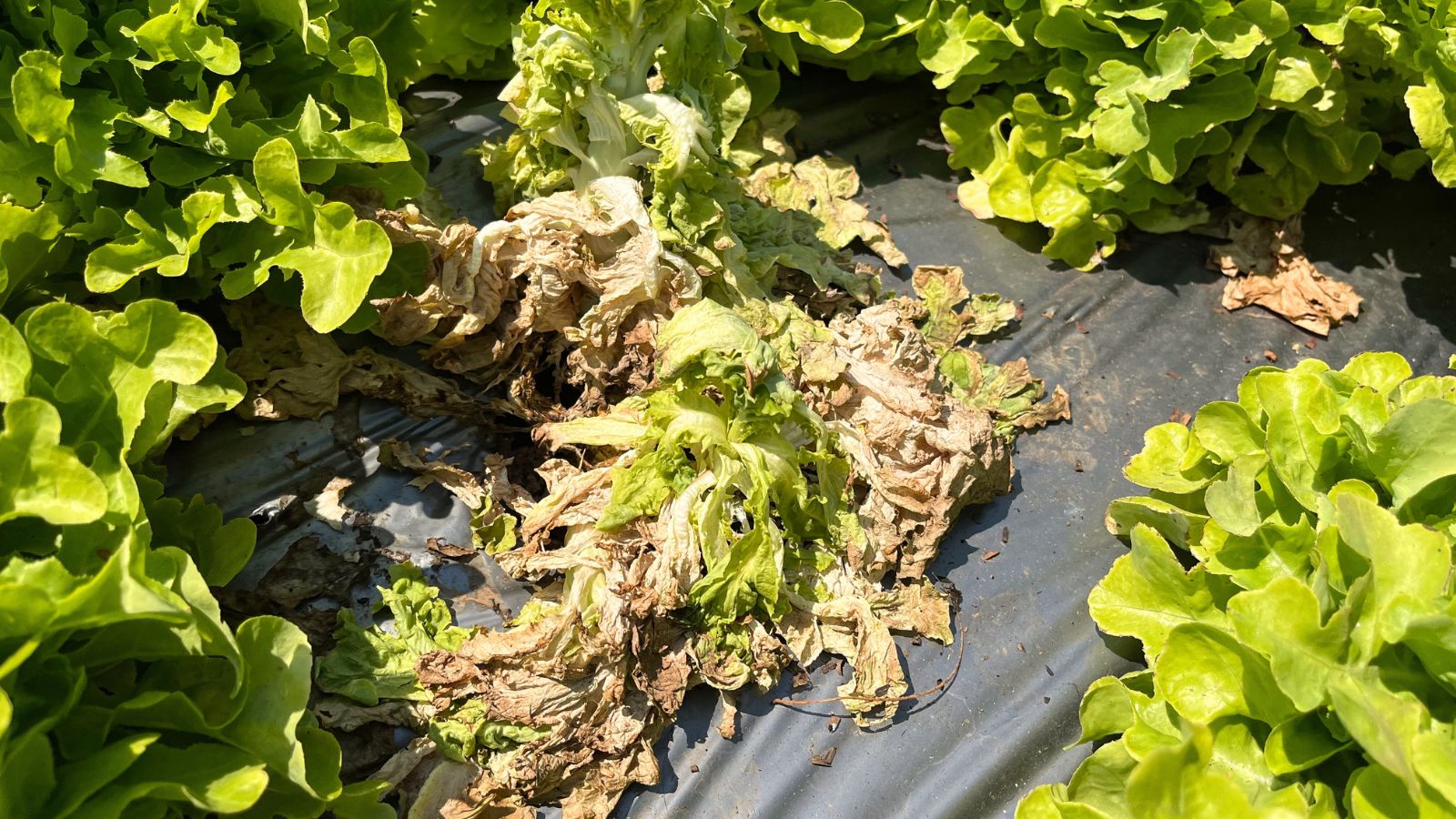
Root rot occurs in warm, humid environments and overly wet conditions. The pathogen Phytophthora, among others, impacts feeder roots, which cannot absorb water and nutrients. Signs of root rot include drought-stressed leaves that turn yellow and wilt.
Check for rot by inspecting stems slightly below the soil line. Rotting stems will be yellow or brown. Roots, too, appear brown rather than a healthy white. They may even have a foul odor.
Plants may recover from rot with early detection and by altering cultural conditions. Dig plants and cut off any brown, rotting roots. Reduce the irrigation frequency to allow the soil time to drain. Ensure soil is evenly moist but not soggy, remembering to water deeply as needed rather than shallow, frequent sessions.
Wilt
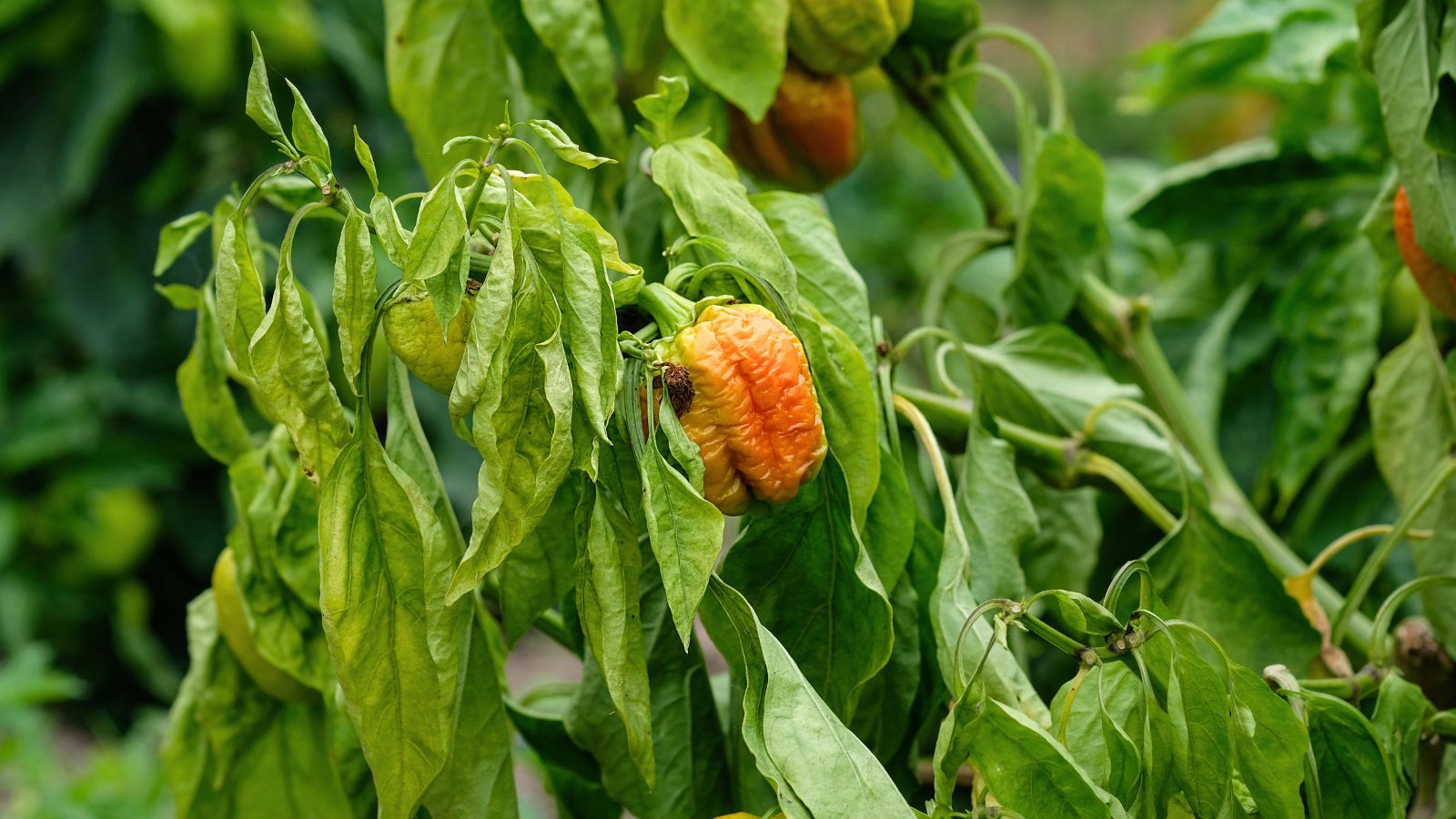
Fusarium and Verticillium wilts cause wilting leaves, blackened leaves and stems, and plant decline. They spread from spores in the soil and with wind, water, and garden tools. The fungus impacts the roots and affects nutrient and water uptake. You may see one half of the plant wilting more than the other with fungal wilts. Wilt begins with the lower leaves, followed by leaves dropping. Stems, when cut, may show brown tissues.
Unfortunately, there’s no treatment for wilts. Remove and dispose of affected plants, keeping them out of the compost pile. Grow disease-resistant varieties to limit the spread.
Rust
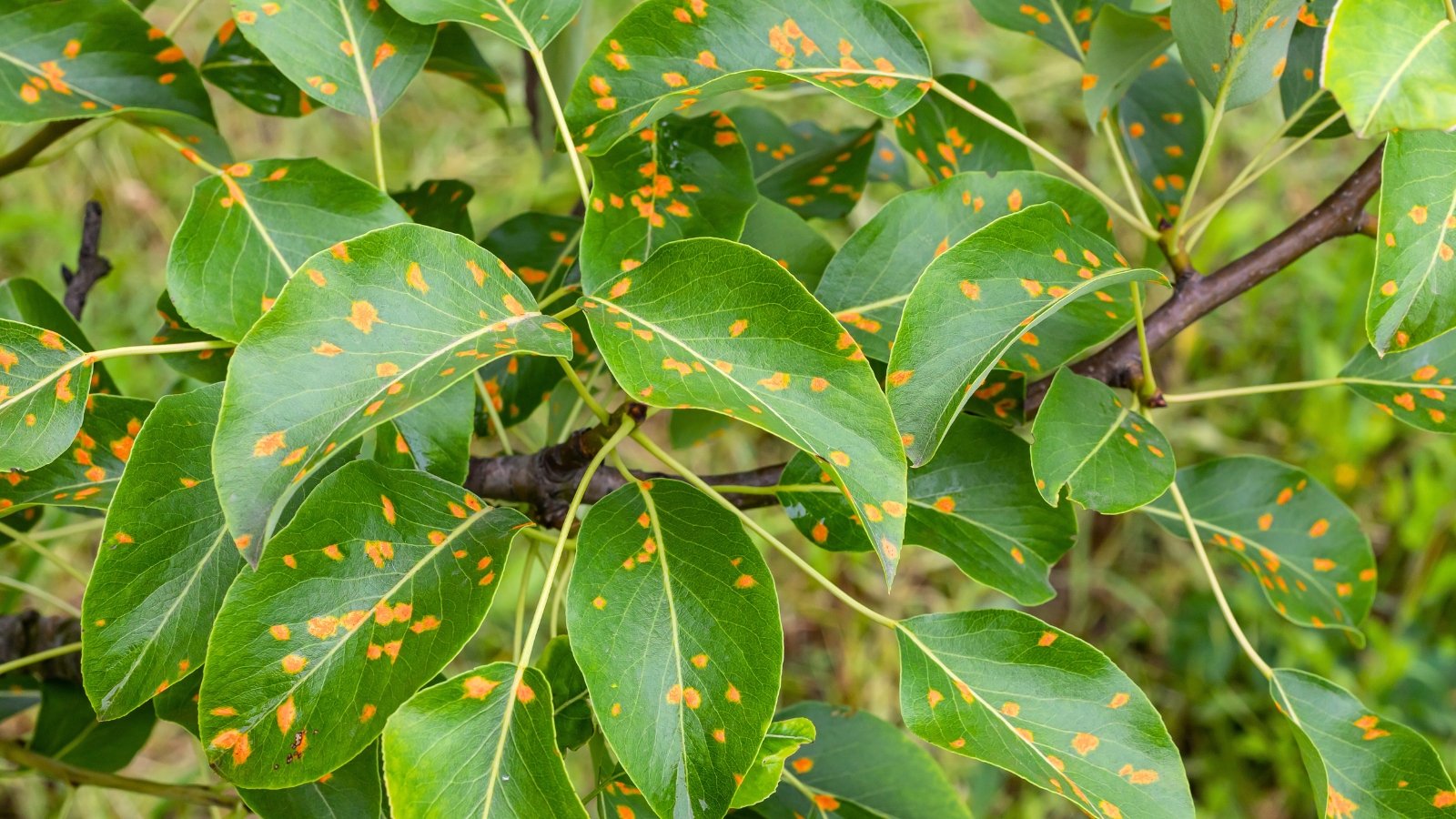
Rust is another disease that is particularly prone to humid climates. Leaves may yellow, wilt, and drop early.
With rust, you may see red lesions on stems or powdery spores on the undersides of yellowing leaves. The spores erupt for easy spreading. Remove any infected leaves or stems and discard them in a garbage bag or burn pile.
Horticultural oils can treat fungal diseases early on. For plants in decline, cutting back stems to the ground and checking fresh growth or removal is the best action.
The best way to prevent rust is to increase air circulation between plants, especially in humid conditions. Watering at the base of the plant delivers moisture to the roots without splashing foliage or harboring damp conditions.




